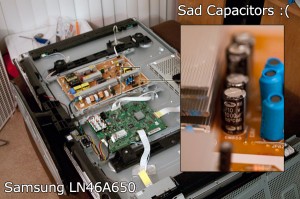Turn Netgear Router into a Print Server
I just purchased a Netgear Wireless N-300 Gigabit Router (WNR3500L) from Best Buy after our 6 year old Linksys router died. It was the least expensive router I could find locally that supported Gigabit transfer rates and, while I could have saved around $20 buying through Amazon, the price was still acceptable.
I later found out that I hit the jackpot with this one. This router is AMAZING! Netgear routers are built with the open source community in mind and they didn't hold back with the hardware on the WNR3500L. This beast has a decent CPU, 8 mb of flash, 64 MB of RAM, and a USB 2.0 port. Out of the box, the router lets you connect and share external storage devices through your router, but with a little open source loving, you can turn your Netgear WNR3500L into a print server so all your wireless devices can print without being plugged in. Note that this may void your warranty and if you're not careful, you could very well brick your router.
3ds Max 2012: Farewell Reactor
Having recently upgraded from 3ds Max 2011 to 3ds Max 2012, I've been busy learning how to use some of the shiny new features. Because of my soft spot for physics engines, I was excited to hear about MassFX for 3ds Max. Sadly, Autodesk also removed Reactor, a physics engine that had been in 3ds Max for years. Unlike Reactor, MassFX does not simulate soft-body dynamics, cloth, water, ragdolls, etc. It only simulates rigid bodies!
Fixing our Samsung Television Rebooting
A few months ago, our Samsung television decided it was time to stop working. Without warning, the Samsung LCD flatscreen, model LN46A650, began rebooting while starting up. I could tell the television was rebooting because I could hear the startup chime, followed by a clicking sound, then the startup chime would go again. At first the Samsung television rebooted only a few times before turning on, but soon it started taking more than a couple minutes restarting before the TV truly turned on.
We knew our TV was dying. We had to consult The Internet. After a few searches, we discovered fellow Samsung users with TVs exhibiting the same symptoms: a rebooting television that took longer and longer to turn on every time. Based on our searches, we decided the problem was a poorly rated capacitor that had failed. We had several options: beg Samsung (who now accept responsibility for the bad capacitor and offer an extended warranty on that piece) and go without television for a few days, pay a technician a few hundred dollars, or fix it ourselves for $7.
So naturally, we decided to void the warranty, tear the TV apart, and fix it ourselves. We ran to the local Radio Shack, purchased a capacitor for $7 and with our trusty soldering iron and some flux, replaced our blown capacitors following this YouTube video.
